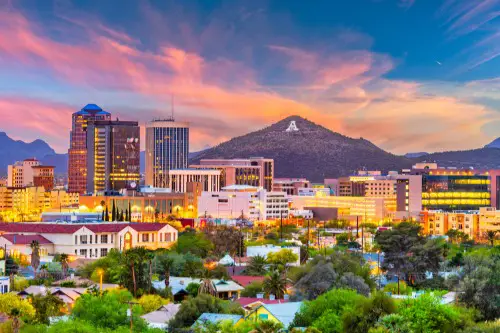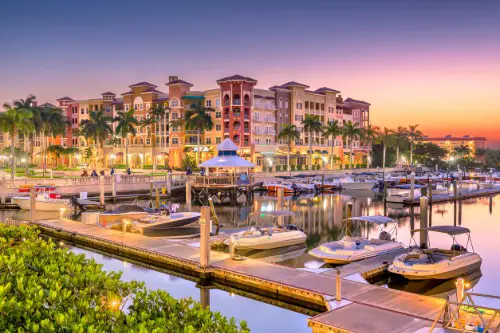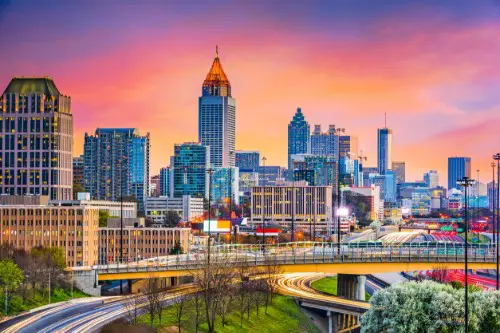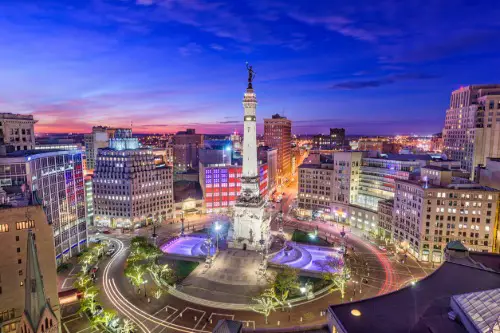1. Arizona

Arizona’s warm climate and relatively affordable housing have attracted many newcomers. However, this population surge has led to increased demand for housing, pushing up property values and living expenses. Cities like Phoenix have experienced significant hikes in housing costs, making it challenging for long-term residents to keep up, according to the Arizona Center of Economic Progress.
Beyond housing, the influx of residents has strained resources such as water and energy, leading to higher utility bills. The increased demand has also impacted healthcare services, with longer wait times and rising medical costs. As Arizona continues to grow, residents are facing the dual challenges of maintaining affordability and ensuring sustainable resource management.
2. Florida

Florida’s warm climate and lack of state income tax have long attracted new residents. However, this influx has led to a surge in housing demand, causing property values—and consequently, property taxes—to skyrocket, according to Central Florida Lifestyle. Cities like Jacksonville have seen property tax bills climb nearly 60% since 2019, with Tampa and Miami not far behind. Additionally, rising insurance premiums, partly due to climate risks, have further strained Floridians’ wallets.
Beyond housing, everyday expenses in Florida have also been on the rise. The increased population has led to higher demand for goods and services, pushing up prices in sectors like groceries and healthcare. Residents are finding it more challenging to maintain their standard of living as costs outpace income growth. This rapid escalation in living expenses has many Floridians re-evaluating their financial plans and long-term residency in the state.
3. Texas

Similar to Florida, Texas boasts no state income tax, making it a popular relocation destination. The resulting population boom has driven up housing demand, leading to increased property taxes. In cities like Austin, property taxes now constitute nearly 20% of median monthly housing payments. This rapid growth has left many Texans grappling with higher living costs than anticipated, according to The Texas Tribune.
The surge in population has also impacted other aspects of daily life. Traffic congestion has worsened, leading to longer commutes and higher transportation costs. Public services are stretched thin, and utility costs have risen as infrastructure struggles to keep pace with demand. Texans are finding that while the state offers many opportunities, the cost of enjoying them is steadily increasing.
4. Georgia

Georgia, particularly the Atlanta metropolitan area, has seen a notable rise in living costs, according to Trading Economics. The city’s growth as a business hub has attracted many new residents, leading to increased housing demand and higher property taxes. Since 2019, property tax bills in Atlanta have risen by nearly 66%, placing a significant burden on homeowners.
The booming economy has also led to increased traffic congestion, resulting in longer commutes and higher transportation expenses. Additionally, the cost of goods and services has risen as businesses adjust prices to match the growing demand. Georgians are finding that the state’s economic success comes with the challenge of managing escalating living expenses.
5. Indiana

Indianapolis, Indiana’s capital, has experienced a sharp increase in property taxes, with bills climbing nearly 67% since 2019. This surge is partly due to rising home values as more people move to the city, according to the United Way of Central Indiana. The increased tax burden has made it difficult for some residents to afford their homes.
The growing population has also led to higher demand for public services, contributing to increased costs in utilities and transportation. Healthcare expenses have risen as medical facilities work to accommodate more patients. Hoosiers are now facing the reality that their once affordable state is becoming more expensive to live in.
6. Washington

Washington state, particularly the Seattle area, has seen a significant rise in property taxes, with homeowners experiencing a nearly 40% increase in their monthly payments since 2019. The booming tech industry has attracted a large influx of residents, driving up housing demand and costs.
This population growth has also led to increased traffic congestion, resulting in longer commutes and higher transportation expenses. The cost of goods and services has risen as businesses adjust to the higher demand. Washingtonians are finding that the state’s economic prosperity comes with the challenge of managing escalating living expenses.
7. Tennessee

Nashville, Tennessee, has experienced a property tax increase of about 30% since 2019. The city’s vibrant music scene and growing job market have attracted many new residents, leading to higher housing demand and costs. This surge has made it challenging for long-term residents to keep up with the rising expenses.
The influx of people has also strained infrastructure, leading to increased traffic and transportation costs. Public services are stretched, contributing to higher utility bills. Tennesseans are now grappling with the reality that their state’s growing popularity is accompanied by rising living costs.
8. Nevada

Las Vegas, Nevada, has seen a slight decrease in property tax bills, with a 4.3% decline since 2019. However, the overall cost of living has risen due to increased housing prices and utility costs. The city’s appeal as a tourist destination and a place to live has driven up demand, impacting affordability.
The growing population has also led to increased traffic congestion and higher transportation expenses. Additionally, the cost of goods and services has risen as businesses adjust to the higher demand. Nevadans are finding that while property taxes have slightly decreased, other living expenses continue to climb.
9. Colorado

Colorado, especially the Denver area, has experienced rising living costs due to an influx of new residents. The state’s natural beauty and outdoor lifestyle have attracted many, leading to increased housing demand and higher property taxes. Residents are finding it more challenging to afford homes as prices soar.
The population growth has also strained public services and infrastructure, leading to higher utility and transportation costs. Healthcare expenses have risen as medical facilities work to accommodate more patients. Coloradans are now facing the challenge of maintaining their quality of life amid escalating living expenses.
10. Oregon

Oregon, particularly the Portland area, has seen a significant rise in living costs. The state’s scenic landscapes and progressive culture have attracted many new residents, leading to increased housing demand and higher property taxes. This surge has made it difficult for some residents to afford their homes.
The growing population has also led to increased traffic congestion and higher transportation expenses. Additionally, the cost of goods and services has risen as businesses adjust to the higher demand. Oregonians are finding that their state’s popularity comes with the challenge of managing rising living expenses.


